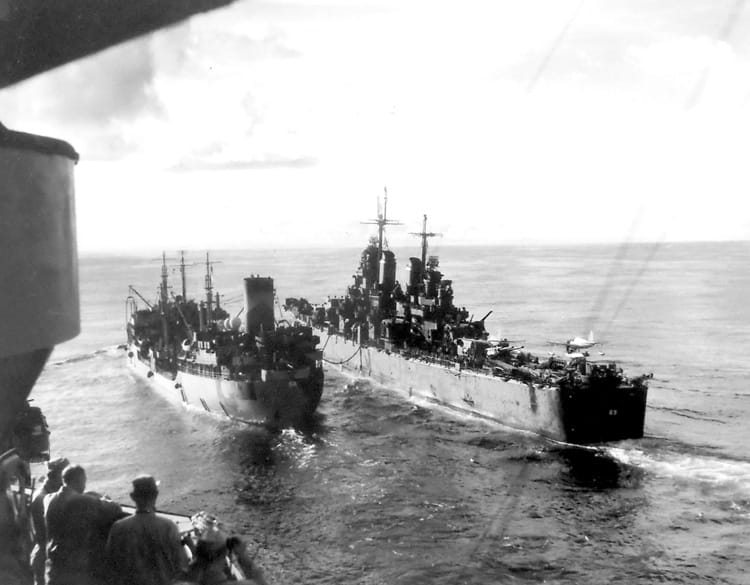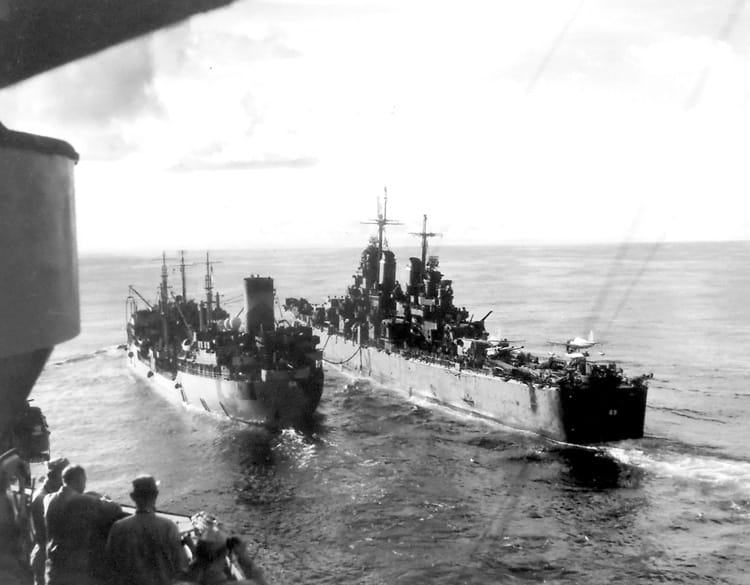How many gallons in a ton?

1-27-18
I’m trying to really bear down on the Baked Beans revisions; I am not rushing – just staying focused. I am winding down on Volume 2 (an action-packed 6 months!!!). The project has caused me to revisit select “official action reports and war diaries” of the ship, the Cruiser Division, and the fleet. Something caught my eye this time – in the CruDiv 10 report for December (TYPHOON COBRA) – there were the usual refueling reports, but for some reason the gallon totals were redacted. That got me thinking about fuel.
The most common action reported in the amazing diaries (especially Pitts and Studenski) are: 1. the carriers launched planes today, 2. we refueled from tankers, and 3. the weather is bad / we’re in (or on the edge of) a typhoon. So I got to thinking . . . how many gallons did it take to fill the Boston? I looked up “Baltimore Class cruisers” on Wikipedia and found that they “could carry up to 2,250 long tons (2,290 t) of fuel.” What does that mean? I remember once when I was around 8 years old or so, my father asked me, ‘what weighs more, a ton of feathers or a ton of bricks?’ C’mon dad, a ton of bricks of course . . .
Naturally there is no direct correlation between tons (measure of weight) and gallons (measure of liquid) – the answer has all the rocket-science stuff that makes my eyes glaze over – density, specific gravity, molecular weight – and on and on. First I tried to find out what a “long ton” is/was. I got several answers that involved “metric tonnes” and the like. After working through unhelpful answers on answers.com, I stumbled onto www.convertunits.com. Bingo! A full tank (2,290 tons) of #2 diesel = 606,262 gallons! (Answers.com says that there are 711,274 gals diesel/metric ton)
Remember that the capital ships (cruisers and battleships) often refueled the smaller destroyers (creating a scenario much like my checking account – in one end and out the other faster than the blink of an eye). So it is impossible to know how much fuel the Boston actually burned through. (We’ll get to that in a minute). Let’s round down to 600,000 gallons to fill the tank. Today’s average retail price for diesel is say, $3.25 per gallon. You’d have to pony up $1, 950,000 to fill that baby up (from empty) at your local gas station!
Digging in a little further, the wikipedia page tells us “the maximum range at a cruising speed of 15 knots (28 km/h) at about 10,000 nautical miles (19,000 km).” Now we know the Boston did not cruise in calm waters at 15 knots very often. You had everything from towing the Houston (@4 knots) to navigating through typhoons to full-speed-battle-speed runs at 33 knots. Throw that “average miles per tankful” right out the window. When the Boston chugged into the Puget Sound Navy Yard at Bremerton, WA on March 12, 1946, she had sailed 286,000 nautical miles. You do the math (I only have 10 fingers).
Peace.
